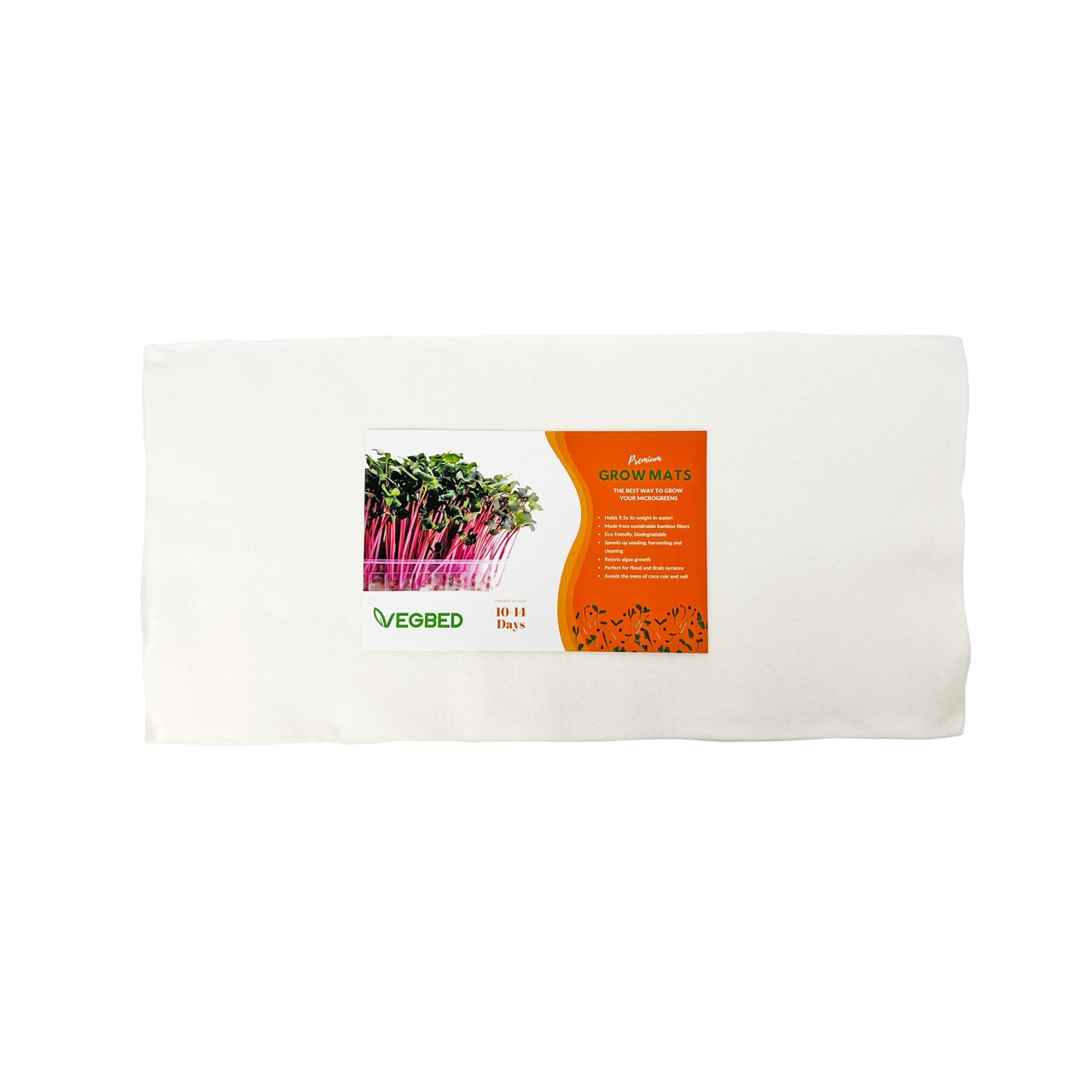In today's world, sustainability in farming is more crucial than ever. As we strive to reduce our environmental footprint and protect natural resources, the choice of growing mediums plays a significant role.
Traditional growing mediums like soil and coco coir have been staples in agriculture for years, but they come with their own environmental challenges. In contrast, innovative solutions like bamboo fiber mats, such as those offered by Vegbed, provide a more sustainable alternative.
This blog explores the environmental impact of traditional growing mediums versus bamboo fiber mats and highlights the benefits of making the switch.
Importance of Sustainability in Farming
Sustainable farming practices are essential for maintaining the health of our planet and ensuring long-term food security. By minimizing resource use, reducing waste, and protecting ecosystems, sustainable farming helps mitigate the impacts of climate change and preserves natural habitats. Choosing environmentally friendly growing mediums is a critical step in promoting sustainability in agriculture.
Overview of Traditional Mediums vs. Bamboo Mats
Traditional growing mediums, including soil and coco coir, have been widely used for cultivating plants. However, their environmental impact has raised concerns. Bamboo fiber mats, on the other hand, are emerging as a sustainable alternative, offering numerous ecological benefits.
Environmental Impact of Traditional Mediums
- Soil Depletion
- Nutrient Degradation: Intensive farming practices can lead to soil nutrient depletion, reducing soil fertility over time.
- Erosion: Soil erosion due to over-farming and improper land management contributes to the loss of arable land and impacts water quality.
- Coco Coir Production Concerns
- Water Consumption: The production of coco coir requires significant amounts of water, contributing to water scarcity in some regions.
- Chemical Use: Chemicals used in the processing of coco coir can harm the environment and affect local ecosystems.
- Transportation Emissions: Coco coir is often transported over long distances, increasing its carbon footprint.
Benefits of Bamboo Fiber Mats
- Renewable Resource
Fast Growth: Bamboo is one of the fastest-growing plants on the planet, making it a highly renewable resource.
Minimal Land Use: Bamboo can be cultivated on marginal lands, reducing pressure on arable land.
- Low Environmental Footprint
Sustainable Production: Bamboo requires minimal water and no pesticides or fertilizers, making its production environmentally friendly.
Carbon Sequestration: Bamboo forests absorb large amounts of CO2, helping to mitigate climate change.
Biodegradability: Bamboo fiber mats are biodegradable, reducing waste and environmental pollution.
Case Studies
- Mary’s Microgreens: Transition to Bamboo Mats
Overview: Mary’s Microgreens switched from using soil to bamboo fiber mats for growing microgreens.
Environmental Benefits: The farm observed improved water efficiency, reduced chemical use, and decreased waste production.
- Shorecrest Microgreens: Sustainable Coco Coir Alternative
Overview: Shorecrest Microgreens replaced coco coir with bamboo fiber mats and have been selling live microgreens.
Environmental Benefits: The switch resulted in lower water consumption, a reduction in the farm's carbon footprint, and decreased waste production.
Conclusion
Switching from traditional growing mediums to bamboo fiber mats offers significant environmental advantages. Bamboo mats are a renewable resource with a low environmental footprint, making them an excellent choice for sustainable farming. By adopting bamboo fiber mats, farms can reduce their impact on the environment, save resources, and promote healthier plant growth.



